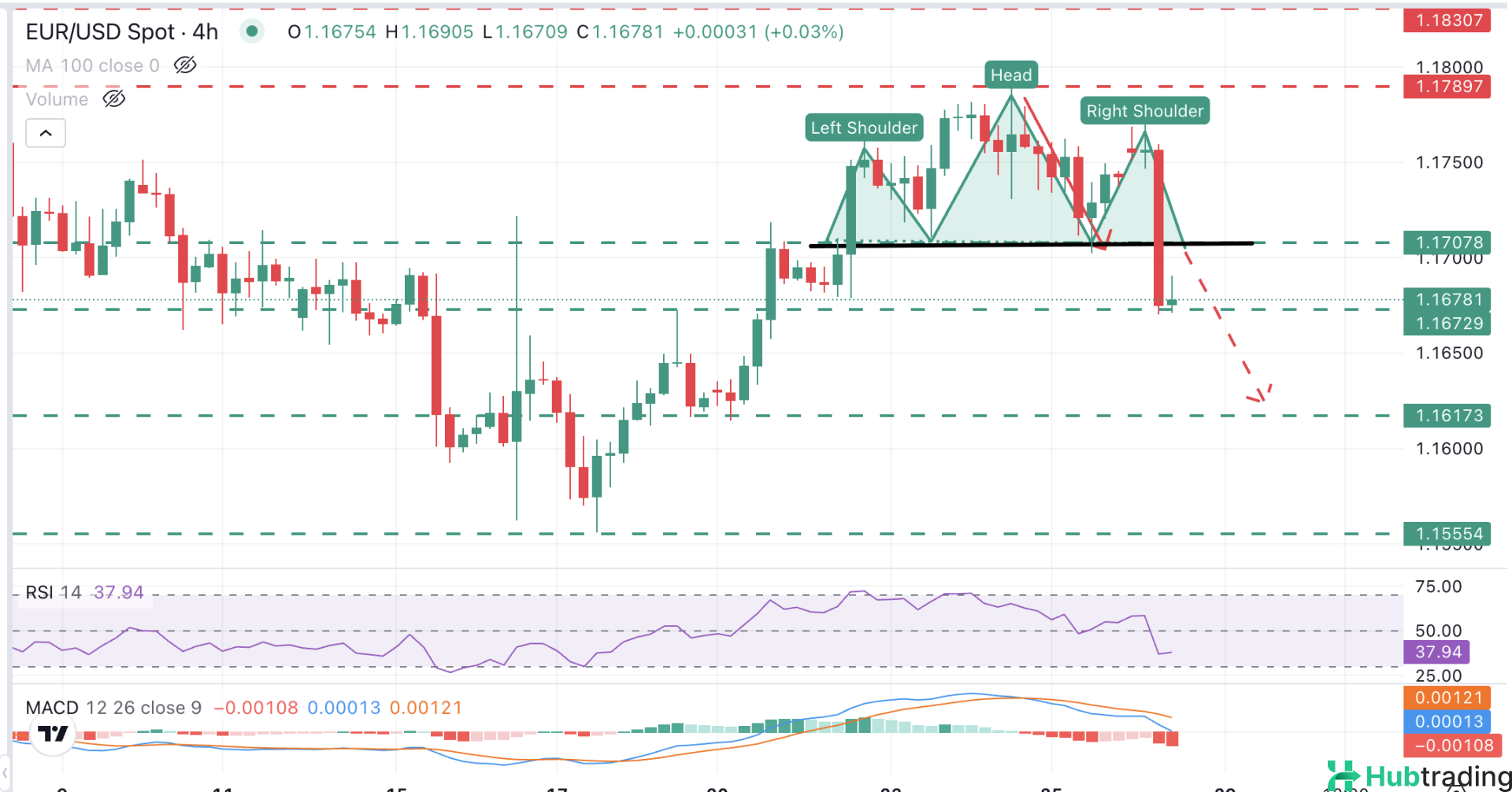It was a classic case of “buy the rumor, sell the fact” for the EUR/USD pair on Monday, as the Euro accelerated its reversal from last week's lows during the early European session. Despite the long-awaited announcement of a trade agreement between the European Union (EU) and the United States (US), the Euro (EUR) failed to find meaningful support, while the US Dollar (USD) continued to gain ground across the board.
The common currency opened the week with modest gains, briefly climbing to 1.1770, but bullish momentum quickly faded. As the European session got underway, the pair plunged nearly 100 pips, breaking below last week’s trading range to settle around 1.1680, with bears firmly in control.
The trade deal, signed by European Commission President Ursula von der Leyen and US President Donald Trump, includes a reduction in tariffs on European exports to 15%—down from the 30% rate previously proposed. In return, the Eurozone has pledged to invest €600 billion in the US and significantly increase its purchases of American gas and military equipment.
However, the agreement failed to shift the underlying market dynamics, as the Euro remains pressured and the US Dollar continues to benefit from solid domestic data. Recent figures have bolstered the Federal Reserve’s cautious “wait and see” stance, effectively ruling out any immediate policy changes following this week’s meeting.
With a quiet economic calendar today—highlighted only by the Dallas Fed Manufacturing Business Index—traders are expected to remain on the sidelines ahead of key events later this week, including Wednesday’s Fed decision and Friday’s closely watched Nonfarm Payrolls (NFP) report for July.
Daily Market Movers Digest: EU-US Trade Deal Disappoints, EUR/USD Breaks Key Support
- Despite being touted as “the best deal we could get” by European Commission President Ursula von der Leyen, the newly signed EU-US trade agreement fell short of investor expectations. Markets had hoped for a zero-for-zero tariff deal, but the agreement imposes 15% levies on key Eurozone exports—pharmaceuticals and automobiles—well below the previously threatened 30% but still a significant burden. In return, the European Union has committed to investing €600 billion in the United States and purchasing €750 billion worth of American natural gas.
- The Euro responded negatively as traders parsed the finer details of the pact, viewing the trade terms as heavily skewed in favor of the U.S. The EUR/USD pair dropped sharply, with bears gaining control and technical levels breaking down.
- Meanwhile, the US Dollar maintains a firm tone from last week, supported by economic data that exceeded low expectations. Friday’s Durable Goods Orders report showed a 9.3% contraction—painful, but better than the forecasted 10.8% drop. Core Durable Goods, which exclude transportation, rose by 0.2%, beating the expected 0.1%.
- These figures followed a stronger-than-expected US Initial Jobless Claims report released the day before, marking the sixth consecutive weekly decline and hitting a three-month low. The data underscores the strength of the US labor market and gives the Federal Reserve more breathing room to maintain its current interest rate stance.
- The Federal Open Market Committee (FOMC) meets on Tuesday and Wednesday, and markets widely expect the Fed to leave the benchmark interest rate unchanged in the 4.25%–4.50% range. However, all eyes will be on Fed Chair Jerome Powell’s press conference, particularly in light of the recent trade deal and an anticipated rebound in US GDP, which is due to be released earlier on the same day.
EUR/USD Technical Outlook: Bearish Breakout Confirmed
EUR/USD came under strong selling pressure during Monday’s early European session, breaking below key support at the 1.1700–1.1710 zone. This move confirmed a Head & Shoulders (H&S) pattern—a classic reversal signal—indicating a potential shift in the short-term trend.
Technical indicators support the bearish outlook. The 4-hour Relative Strength Index (RSI) has dropped below the neutral 50 line, entering negative territory, while the MACD signals growing downside momentum.
![]()
The pair has found initial support around 1.1675, close to the July 22 low at 1.1680. A modest rebound cannot be ruled out and could retest the broken support at the 1.1700–1.1710 area. However, the immediate trend remains bearish, with the H&S pattern targeting the 1.1617 region—near the lows from July 18 and 21.
On the upside, EUR/USD must break back above 1.1710 to alleviate bearish pressure. A move beyond this level would shift attention toward the intraday high at 1.1770 and the July 24 peak at 1.1790, before bulls can aim for the multi-year high at 1.1830. Until then, the path of least resistance remains downward.






